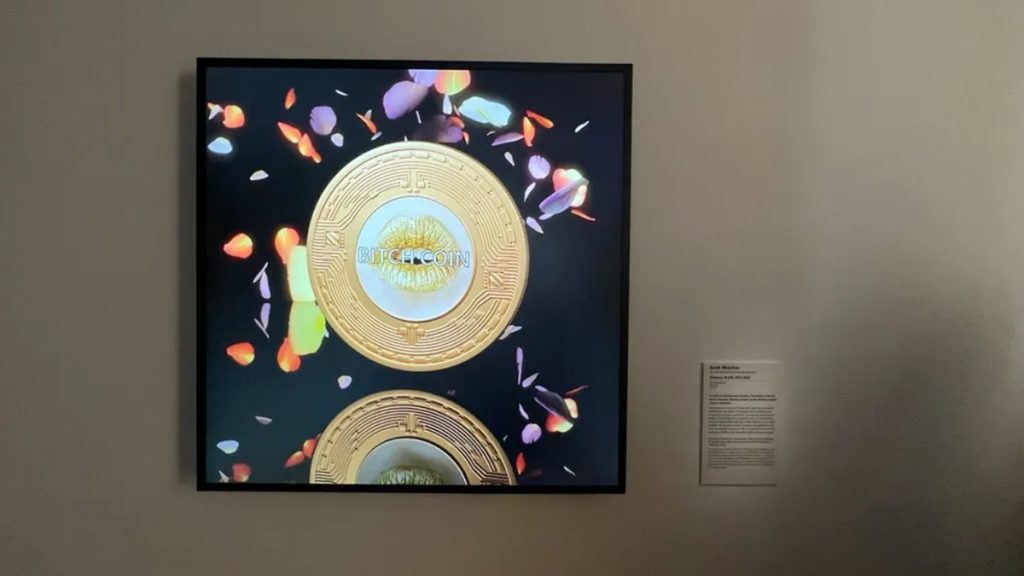The world-famous Centre Pompidou in Paris has a new, one-of-a-kind exhibit: a CryptoPunks NFT, shown alongside original masterpieces by Matisse, Picasso, and others.
It’s a part of a new show called “Policies of the Immaterial: From Certificate to Blockchain,” which investigates how blockchain technology may be applied to the creative process. The show, which opened in October and will run until January 2024, contains the work of 13 French and foreign artists chosen by the National Museum of Modern Art’s purchase committee.
CryptoPunk #110 is a non-fungible token (NFT) work of art that is included in this category.
Matt Hall, co-founder of Larva Labs and developers of CryptoPunks said, “It’s a real honor, obviously, but it’s also quite a surprise,” he said. During the past few years, things have undoubtedly moved quickly.
Yuga Labs, the company behind CryptoPunks, donated the NFT to the museum as part of their “Punks Legacy Project.” In March of 2022, Yuga Labs, creators of the wildly successful Bored Ape Yacht Club (BAYC) NFT collection, acquired the intellectual property rights to Larva Labs’ NFT products CryptoPunks and Meebits.
Art historians will remember NFT
There are also examples of pixel art, generative art, crypto art, and other forms of digital art on display.
The exhibition’s co-curators, Marcella Lista and Philippe Bettinelli, aimed to showcase the breadth of artistic expression surrounding blockchain technology. Their primary goal is to show the context of these pieces and trends within the greater canon of art history.
They call it an “original study of the crypto-economy ecosystem and its impact on definitions and boundaries of artworks, creators, collections, and the audience.”
“We had worked on several games before, using pixel art,” stated Hall. “John [Watkinson, the other co-founder of Larva Labs] had drawn many of the graphics for those. He had been experimenting with the character generator, by applying the pixel-art style he was accustomed to.”
An Autoglyph, part of the world’s first collection of on-chain generative art, is also on view at Larva Labs. The creators of Larva Labs saw an opportunity to improve upon NFTs by incorporating all relevant information—including the image itself—into the smart contract.
Hall explains, “I believe what the curators appreciated about the piece was that it holds a significant place in the continuity of generative art and computer-generated art from the 1960s onward.”
Pioneering artists’ works
Works that alluded to the blockchain far before the publication of the Bitcoin whitepaper are on display alongside numerous incarnations of digitally native art.
The oldest piece here is Yves Klein’s “The Checkbook,” which dates back to 1959. These checkbooks were his idea for facilitating the transfer of “transferable immaterial pictorial sensitivity.”
Upon purchase, the buyer obtains legal title to what can only be described as empty land, keeping only the sales receipt designed by Klein himself and rendered in the form of a check with gold letters.
The artworks on show were selected because of their propensity to investigate novel ideas. In 1996, the first ever online-only auction sold “Network-Parcel,” an artwork by French artist Fred Forest.
“Bitch Coin,” by French-American artist Sarah Meyonas, is the first piece of art to be created entirely within the blockchain. Sarah Meyonas created the first piece of tokenized art by making a token whose worth was determined by the artist’s notoriety.

The Centre Pompidou’s acquisition of NFTs is significant mainly because they are now part of the French national heritage.
It can be quite shocking to see them all at once, as Larva Labs’ Matt Hall pointed out.
Content Source: decrypt.co
The post Paris’ Pompidou Art Museum showcases CryptoPunks NFTs appeared first on NFT News Pro.
